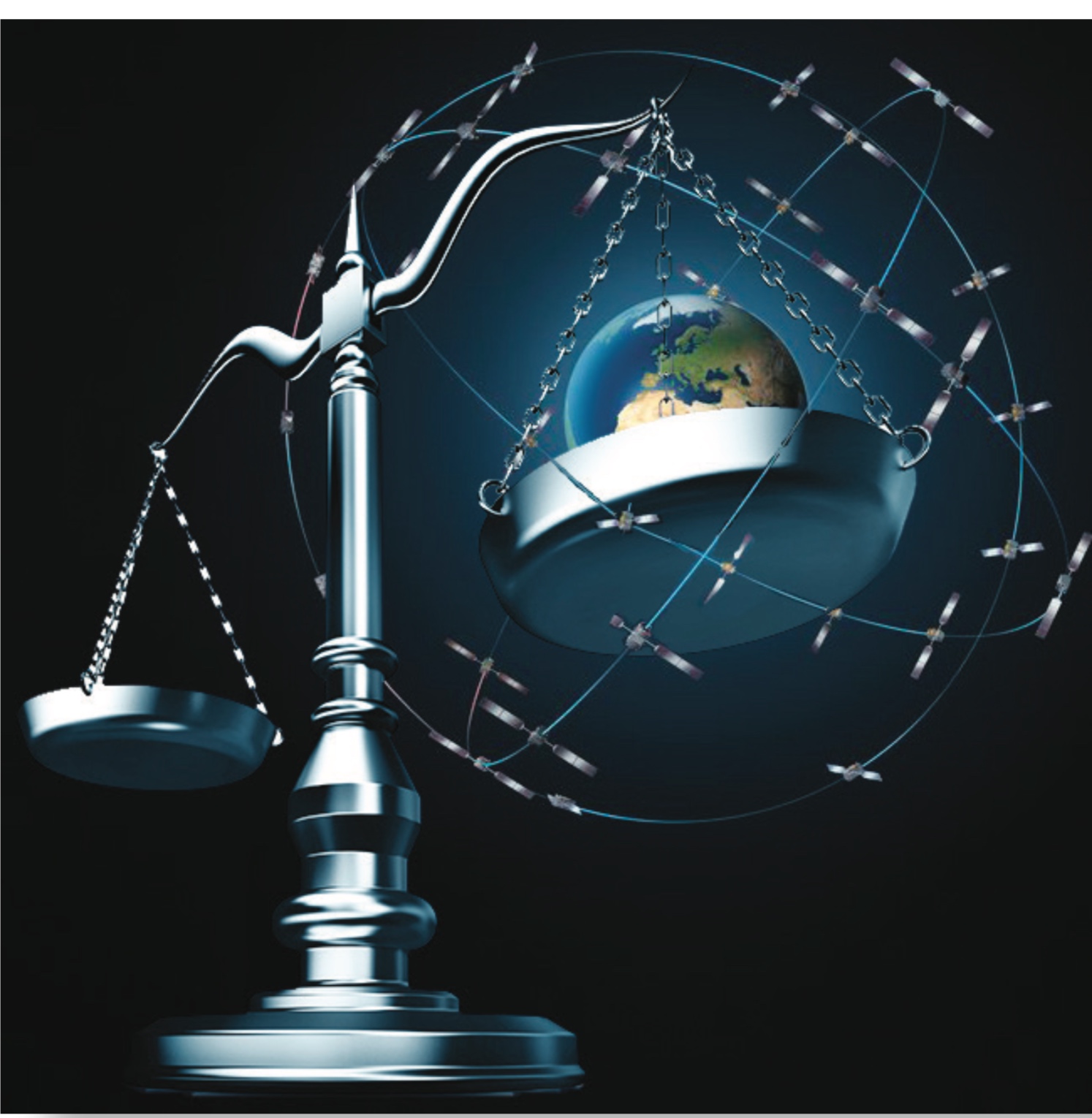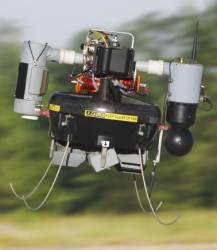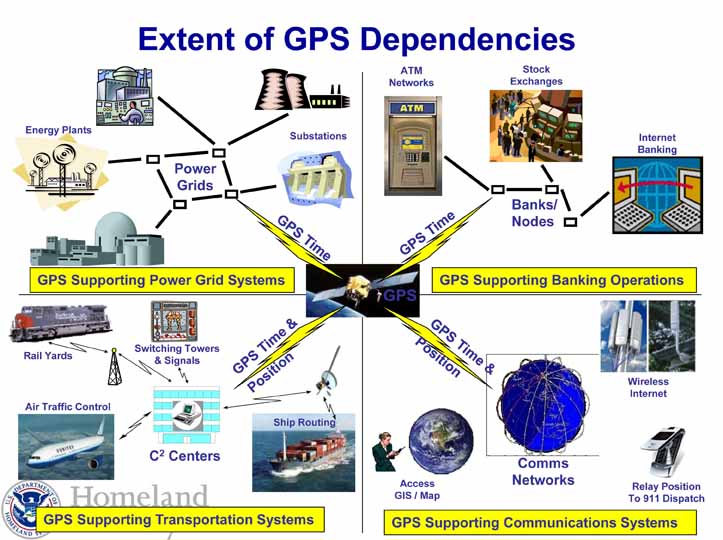The legal and privacy issues surrounding GPS investigations have come to the forefront around the globe in recent years. Recent court rulings in both Japan and the United States provide insights into the future. Here we summarize and examine a decision by the Japanese Supreme Court and relevant lower court’s decisions, as well compare the Japan decision and the mosaic theory from an earlier U.S. court decision.
Aound the globe, police make increasing use of GNSS tracking and other technologies for criminal investigations. National laws and court decisions are using different approaches and come to different solutions regarding the legality of such measures, in view of their implications on the rights of individuals and namely the protection of privacy. There are two different types of methods using GNSS tracking for criminal investigations. One type is obtaining positional information indirectly by requesting the telecommunication service providers to provide the positional information of a target’s device. The other type is obtaining positional information directly by using GPS terminals attached on a target’s belongings.
In Japan, secrecy of communication is guaranteed by the Constitution. Furthermore, the Telecommunications Business Act provides that the communications being handled by the telecommunications service provider shall not be censored and the secrecy of such communications shall not be infringed. Therefore, the telecommunication service providers are prohibited from providing a contractor’s positional information for the police without the statutory basis. Therefore, when the former is conducted, the police must obtain an inspection permit. On the other hand, the latter has not been regulated in detail by a law, so the police had employed the latter method without any warrants. Under such circumstances, the legality of the latter method of GPS investigation became controversial.
Similar situations are occurring worldwide. For example, the U.S. Supreme Court has already ruled on similar matters. In 2012, the U.S. Supreme Court ruled in United States v. Jones that the government’s installation of a GPS device on a target’s vehicle, and its use of that device to monitor the vehicle’s movements, constitutes a “search” under the Fourth Amendment to the United States Constitution. The case was subject to significant legal debate and diverging opinions among the Supreme Court´s judges. Recently, the U.S. Supreme Court decided on the comparable matter of cellphone location data. In Carpenter v. United States, the Court held that the government violates the Fourth Amendment by accessing historical records containing the physical locations of cellphones without a search warrant.
Last year, Japan’s Supreme Court decided for the first time on the legality of the latter type of GPS investigation without warrants. Lower courts have made judgments about the matter preceding the Supreme Court decision and, like is the case in the U.S., caused controversies among lawyers.
This article consists of three parts. The first Part (2) outlines the legal issues about GPS investigation under the Japanese legal system. The second part (3, 4, 5) summarizes and examines the decision by the Supreme Court and relevant lower court’s decisions. The final part (6) draws some comparison between the Japan’s Supreme Court’s decision and the mosaic theory which was referred in the previous U.S. decision.
Statutory and Case Law Framework
Before examining the details of the Supreme Court decision, we provide some background on the legal issues related to GPS investigations without warrants under the Japanese legal system.
There are two basic provisions applicable to this matter. Firstly, Article 35 of the Constitution provides that “the right of all persons to be secure in their homes, papers and effects against entries, searches and seizures shall not be impaired except upon warrant issued for adequate cause and particularly describing the place to be searched and things to be seized.” Secondly, the proviso to paragraph (1) of Article 197 of the Criminal Procedure Code provides that “compulsory dispositions shall not be applied unless special provisions have been established in this Code.” Applying these articles to a disposition by public authority, if the disposition is relevant to “compulsory dispositions”, a warrant is generally needed to make the disposition.
According to the established case law (Supreme Court 1975(A)No.146, March 16, 1976; Keishu Vol.30, No.2, at 187), “compulsory dispositions” are defined as “measures that are not permitted in the absence of special rules and provisions justifying such action, such as suppressing or subjecting the individual to unreasonable duress and placing restrictions on his person, residence, or property for the purpose of carrying out the coercive investigation.” This definition consists of two elements, namely, the suppressing or subjecting of the individual to unreasonable duress and the restrictions placed on important rights of the individual. Moreover, the Criminal Procedure Code and the Act on Wiretapping for Criminal Investigation specifies different types of warrants for each compulsory disposition: a search and seizure warrant, an inspection permit and wiretapping warrant are defined as warrants for compulsory dispositions (besides warrants for physical restraint of a person). Therefore, when a new type of compulsory disposition which is not provided in the Criminal Procedure Code emerges, it is needed to consider the nature of the compulsory disposition and determine which type of compulsory dispositions defined in laws covers the compulsory disposition to decide which type of warrant must be obtained. Otherwise the newly emerged compulsory disposition cannot be employed by the police.
Against the above framework of the Japanese law, including the case law, two issues are identified about the GPS investigation without warrants. The first issue is whether any warrant is needed for the GPS investigation or not (“Issue 1”). As for the GPS investigations, the second part of the definition of “compulsory disposition” by the Supreme Court, i.e. the placing of restrictions on important rights of the respective individual, is the main point of debates. If a warrant is necessary for GPS investigations, the next issue is which type of warrant is suitable for the GPS investigation (“Issue 2”). A few lower court’s and some academics argued that “inspection” could cover GPS investigations. The Supreme Court defined “inspection” as a “disposition recognizing and maintaining by utilization of the five senses to validate the existence, characteristics, states, and details of the objectives” (Supreme Court 1997(A)No.636, December 16, 1999; Keishu Vol.53, No.9, at 1327). Hence, if GPS investigation satisfies this definition, it may be conducted when, and only when, an inspection permit is issued.
Facts of the Case
The accused was indicted for committing a group robbery with others (also indicted, but not appealed to the Supreme Court). In this case, the police attached GPS terminals on 19 vehicles for a period of approximately six and a half months to track their locations and monitor their movements. The vehicles were not only used by the accused and his accomplices, but also by the accused’s female friend. The investigation was conducted without their consent and without a warrant.
The accused argued that GPS investigation without obtaining a warrant is illegal so that the court should reject the admissibility of the evidence obtained directly from GPS investigation as well as evidence closely related to such GPS investigation.
Lower Court’s Decisions
The court of first instance (Osaka District Court 2014(Wa) No.5962, July 10, 2016; Keishu Vol.71, No3) concluded that GPS investigation constitutes a compulsory disposition so that such method of investigation needs a warrant. The court of first instance based its ruling on two main considerations. First, a subject’s information can be obtained through GPS investigation even when the subject is in an area where one has a reasonable expectation that its privacy is protected. Second, intruding into private estate to attach GPS terminals is infringement on the estate owner’s property right. The court concluded that GPS investigation places restrictions on one’s right of privacy and shall be one of compulsory dispositions.
As regards to the type of a warrant required, the court held GPS investigation needs an inspection permit. It considered that GPS investigation has the nature of inspection, in that investigators utilize their five senses to observe the positional information of the GPS terminal on a display screen of a receiver.
The court decided that the GPS investigation in this case was illegal in that it was conducted without obtaining an inspection permit.
In contrast, the court of prior instance (Osaka High Court 2015(U) No.966, March 2, 2016; Keishu Vol.71, No3) concluded that GPS investigation does not need a warrant. Although the court’s reasoning is not straightforward, it mentioned two factors which concluded the GPS investigation had not infringed on the suspect’s right to privacy significantly. First, the court held that the level of privacy infringement was not high, given that the information obtained by GPS investigation was limited to the locations of the vehicles to which GPS terminals were attached. However, the court did not elaborate on this point. Other lower court’s decisions on similar cases had stated that, as the location of a vehicle can in general be seen by many people, such information is not important enough to be protected. Commentaries about this decision also argue that the court may have considered the privacy was not seriously infringed through this investigation because the information obtained by such method is not important. Secondly, the police did not obtain information automatically and continuously for a long period of time. The actual method of obtaining information was that the police operated a GPS receiver manually each time to show the location information on the display screen. In other words, such information was not collected and accumulated automatically. This means, according to the court, that the police could not obtain information comprehensively through the GPS investigation conducted in this case. Based on these two elements, the court of prior instance concluded that the GPS investigation did not fall under the compulsory disposition that required a warrant. Thus, the court did not find the GPS investigation illegal.
Issue 2 did not become a problem because, according to this court’s decision, a warrant was not necessary for GPS investigation.
The views of the District Court and High Court about the legality of the GPS investigation were totally different. Therefore, it was all the more interesting how the Supreme Court decided on this issue. The next section describes the decision of the Supreme Court.
Supreme Court’s Ruling (Supreme Court 2016(A) No.442, March 15, 2017; Keishu Vol. 71, No. 3)
The Supreme Court ruled the accused guilty from evidences other than evidences obtained through the GPS investigation. On the other hand, as obiter dictum, the Court mentioned the legality of the GPS investigation.
The Court first considered the nature of the GPS investigation and held that it entails the invasion of the personal sphere by the public authority. GPS investigation which is conducted to retrieve and monitor current location information of the target vehicle makes it possible, by its nature, to monitor the location and movements of the target vehicle and its owner, not only when they are on public streets but also when they are in such places or their activities relate to such areas as require strong protection of personal privacy. Since such a method of investigation inevitably involves the continuous, comprehensive monitoring of the person’s activities, it can infringe upon the personal privacy.
Furthermore, GPS investigation should be considered to entail the invasion of the private sphere by public authorities, in that it is conducted by secretly attaching devices that enable such infringement of privacy to personal property.
The Court then analyzed Article 35 of the Constitution and found that, the “right … to be secure in their homes, papers and effects against entries, searches and seizures” under the Article covers the right against the “invasion” into the private sphere that is equivalent to “homes, papers and effects”.
Based on this understanding, the Court held that GPS investigation is a disposition that is not permitted under the Criminal Procedure Code without special statutory grounds and, therefore, not permitted to be conducted without a warrant.
The Supreme Court then considered the possibility of conducting the GPS investigation by acquiring a warrant under the current Criminal Procedure Code but denied such a possibility. It concluded that there is no type of warrants under current Japanese laws suitable for GPS investigations and that, therefore, a new kind of warrant is needed for such investigations.
According to the Court, while GPS investigation is similar to the “inspection” under Criminal Procedure Code in that it involves reading of the data from the information device on the screen, it is difficult to deny that GPS investigation also has a feature that cannot be covered by the “inspection.” The latter feature becomes apparent in that assuming that an inspection permit is required to conduct GPS investigation, the inspection permit specifies only the vehicle to which a GPS terminal should be attached and the charge, which is not sufficient to prevent excessive monitoring of the vehicle user’s activities that are irrelevant to the alleged facts, as GPS investigation inevitably involves the continuous, comprehensive monitoring of the target vehicle user’s activities. The Court further noted that while in the case of a warrant under the current Criminal Procedure Code the warrant must be shown to the person who is to undergo the measure to ensure due process in principle, such a step is unconceivable, given that the GPS investigation would be meaningless unless it is conducted without being known to the suspect.
Having such holding, the Supreme Court pointed out that the due process suitable for the GPS investigation be better determined by the legislation and not left to judicial interpretation of an existing statute, as the latter approach would end up in the judges’ discretion on a case-by-case basis and not be in line with the intention of the proviso to paragraph (1) of Article 197 of the Criminal Procedure Code, which provides, “compulsory dispositions shall not be applied unless special provisions have been established in this Code.”
In conclusion, the Supreme Court opined that it is desirable that a new law that will conform to the principles of the Constitution and the Criminal Procedure Code be enacted, reflecting the features of GPS investigation.
The Analysis of the Supreme Court Decision: Comparisons with the “Mosaic Theory”
In comparison with the U.S. decision, a similar issue happened regarding Issue 1. In the U.S., the issue is whether obtaining positional information through GPS investigation is an invasion of the right, which is “the right of the people to be secure in their persons, houses, papers, and effects, against unreasonable searches and seizures”, protected under the Fourth Amendment of U.S. Constitution or not. If GPS investigation is an invasion of the right, the investigation is needed a warrant in general. This issue is similar to Issue 1 mentioned earlier.
As previously described, the reasoning of Japan’s Supreme Court decision is divided into two parts. The first part notes that “a method of investigation inevitably involves the continuous, comprehensive monitoring of the person’s activities”. The second part finds that “a method of investigation that invades a person’s private sphere by attaching devices that enable personal privacy invasion to the person’s property.”
Both of the reasons are referred in the Supreme Court’s decision in United States v. Jones (United States v. Jones, 132 S.Ct. 945 (2012)). The latter is same reason as majority opinion referred in Jones. On the other hand, the former seems to be similar to the “mosaic theory” referred by concurring and dissenting opinions in Jones. “Mosaic theory” means “continuous government collection of information about an individual could infringe on the person’s reasonable expectation of privacy.” Applying this theory on the matter of GPS investigation, obtaining positional information on public roads continuously and comprehensively through GPS investigation has the possibility to disclose one’s private affairs, like religious activities and political activities.
The Japanese Supreme Court decision, in particular the second part of its reasoning, appears to be the same as the mosaic theory. However, some commentators doubt that it is. This is because the full acceptance of the mosaic theory could render illegal the traditional shadowing and stakeouts to collect positional information on public streets for a long term as disclosing one’s private affairs. Furthermore, it should be unclear to what extent of volume or term the positional information may be collected if the mosaic theory were to be adopted. Given these doubts about the mosaic theory, some commentators read the Japanese Supreme Court decision as not concerned about “the continuous, comprehensive monitoring of the person’s activities” as such, but based its decision on the fact that the positional information relating to “places and spaces where personal privacy should be strongly protected” could be involved in the process of collecting positional information continuously and comprehensively.
Conclusion
The legality of GPS investigation is a common issue worldwide and national legal systems and courts have different views with regard to the nature and legality of GPS investigations. Discussions about the issue in U.S. and Europe have been introduced in Japan and affected the Japanese Supreme Court’s decision. However, the decision does not provide a comprehensive solution to the problem of GPS investigations since the judgment leaves much room for interpretations. This unclear conclusion is due to the fact that the nature of GPS investigations does not fit well in the existing framework of criminal procedure.
There are various types of GPS investigations today and, regarding Issue 1, there are also many anticipations of decisions about each type of investigations that may come. Especially, as stated above, GPS investigations by using GPS functions with the target’s smartphone are often conducted for the tracking of the target. The Japanese Supreme Court has not ruled on such type of investigations. Also, the type of investigation is greatly different from the investigation conducted in this case, so the decision that may come cannot be directly based on the ruling in this case. Therefore, it is necessary to find essence of this ruling. On the other hand, there is a possibility that such unclear conclusion has some effect on the industry. When police conduct GPS investigations, they lease GPS terminals from a private company, like with this case. Therefore this investigation has some industrial relevance to GPS terminal manufacturers and leasing businesses. If police hesitate to conduct GPS investigation because of the decision, there is no denying that such industries are affected.
Moreover, in the near future, a new law for GPS investigation is going to be established in Japan and GPS investigation will be a promising method of investigation that will be commonly used. However, the legislative bill for GPS investigation hasn’t been settled until now. The law will need to keep the balance between the efficiency of GPS investigations and the protection of human rights. There still are various opinions about specific items of the law, and building a consensus on this may be quite a future task.
Currently, the Japanese judicial system is facing a big problem about GPS investigations.
Additional Resources
1. Horie, S., (2017): Memorandum of Supreme Court’s Decision about GPS Investigation, Quarterly Jurist, 2017, Summer/Number 22, 138-147
2. Inoue. M., (2017): No.30 GPS investigation, Extra Number Jurist No.222, 64-69
3. Ito, M., and T. Ishida (2017): Comments on Supreme Court Decisions; Jurist June 2017/Number 1507, 106-115
4. Pomfret, K., (2016). Implications of Evolving Expectations in the United States, Inside GNSS, September/October 2016, 46-49
5. Sasada, E., (2017). GPS Investigation and Article 35 of Constitution. Law Class, July 2017, Number 442, 123
6. Yamamoto, T., (2017): Aporia of the Decision about Illegal GPS Investigation?, Quarterly Jurist 2017 Summer/Number22, 148-155
Author and Column Editor
Maria Taniuchi is a legal apprentice in Japan and graduated from Kyoto University law school. She has experience studying in Taiwan at the National Cheng-chi University. She worked at a global law firm in Germany (Internship).
Ingo Baumann is the column editor for GNSS & the Law, and the co-founder and partner of BHO Legal in Cologne, Germany, a boutique law firm for European high technology projects mainly in the space sector. Ingo studied law at the Universities of Muenster and Cologne. His doctoral thesis, written at the Institute for Air and Space Law in Cologne, examined the international and European law of satellite communications. Baumann worked several years for the German Aerospace Centre (DLR), including as head of the DLR Galileo Project Office and CEO of the DLR operating company for the German Galileo Control Center.






